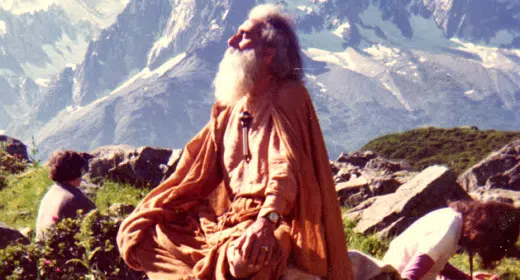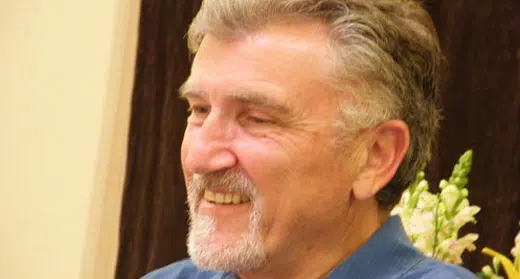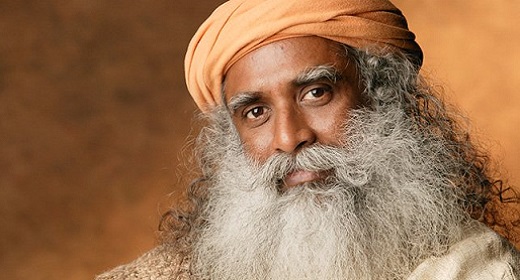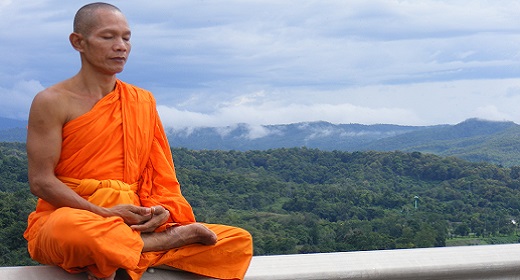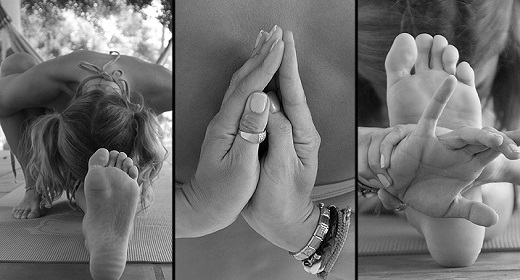by Joseph Goldstein and Jack Kornfield: Insight. Loving-kindness. Cultivating what’s wholesome. And making them real in our lives every day…
These are what make us free, say Insight Meditation teachers Jack Kornfield and Joseph Goldstein, in a conversation at California’s Spirit Rock Meditation Center, moderated by Michelle Latvala.
Michelle Latvala: One of the big differences between Buddhism in the East and Buddhism in the West is that the majority of meditators here are lay practitioners, as opposed to monastics. Can you give us some ideas about how Western householders, with busy lives at home and at work, can still have a deep and effective meditation practice?
Jack Kornfield: Particularly in the West, practice can easily activate a kind of striving and ambition and self-judgment. So it’s critical to add a lot of loving-kindness and compassion practice. As people begin to sit, there’s a layer of self-judgment and self-criticism that needs to be addressed with compassion, rather than more striving. That allows dharma practice to deepen, because it’s only when attention is married to loving-kindness that things begin to open up. When the two are together, a kind of freedom quite naturally starts to happen. Otherwise, we’re still struggling and judging the way things are.
Joseph Goldstein: It is important to take some time occasionally to reflect on what our highest aspirations are. It’s helpful to do that because we come to the practice for many different reasons, and often these change as we deepen our understanding.
If we have a clear understanding of what our highest aspirations are, then it is clearer what we have to do to get there. If our aspiration is just to calm down a little bit and have less stress in our lives, that’s one thing, and we can do the appropriate practices. But if our aspiration is to get enlightened, that’s another kettle of fish, and we need to deeply consider what that means.
Assuming we aspire to get enlightened, there are a couple of simple things that can keep us on the glide path of awakening. These are practical things we can do amid the busyness and distractedness in our lives today. One thing that’s so helpful is a daily sitting practice. We need some time each day when we quiet down and actively train our mind in awareness and mindfulness. We need to arrange our day around that, because it’s so easy for it to get squeezed out.
The other thing that can really transform the quality of practice in our lives is understanding and practicing wise speech. We speak a lot in our daily lives, but how many of us pay attention to the motivation for our words before we speak? Probably not that many! We’re in conversation, whether it’s at work or with friends and family, and the words just tumble out. Sometimes they’re motivated by wholesome, loving qualities, and sometimes not.
My favorite Pali word is samphappalapa. It means exactly what it sounds like—useless talk. I love the practice of watching my mind about to samphappalapa, because the tendency is so strong to speak for the sake of speaking. That has no value, no purpose. By seeing that “about to,” you can then think, “No, I don’t have to do that.” It’s amazing how free we feel in that moment of restraint.
It’s essential that we understand which are wholesome thoughts—those are the pathways worth deepening—and which thoughts and emotions are unskillful. Those are worth letting go of so we’re not unconsciously deepening their pathways.
Speech is such a huge part of our daily experience, and often its motive is to cause divisiveness or harm to others. So to practice right speech, we need to pay attention to our motives. That’s not easy. There are very few of us—if any—who have perfectly pure motivation. So when we look at our motivation, it takes a lot of clarity and honesty, sometimes even courage. But if we are willing to be open and honest about the mix of motivations behind our speech and our actions, then we can choose the motives which are most wholesome and act from those, and let the others go.
Jack Kornfield: There’s one other thing I want to add about daily practice, and that’s finding the joy in practice. Yes, we have to go through a layer of trauma and resentment and things like that, but that’s not who we really are. That’s not what the dharma points to. When the texts begin, “Oh nobly born” or “You are the sons and daughters of the awakened ones,” they help us remember who we are. They point to our capacity for joy, well-being, and freedom. That motivates and strengthens our practice.
Michelle Latvala: One of the Buddha’s most fundamental teachings is that we need to incline the mind toward wholesome states that bring happiness and away from unwholesome states that cause suffering. Could you tell us more about how to practice that?
Joseph Goldstein: One useful framework for understanding the subtleties of meditation practice is the two truths. There is the relative truth, which is our conventional reality of self and other, our ordinary way of being in the world. Then there is the more ultimate truth, which is described in the teachings on emptiness.
The great challenge as we mature in our practice is the integration of these two truths. It’s very easy to get stuck in the relative level—the drama and stories and solidity of our lives—but it’s also possible to get stuck on the more ultimate level of emptiness. And the great Indian adept Nagarjuna said that while attachment to relative truth is a problem, people who are attached to emptiness are hopeless! Because if we’re attached to the idea of emptiness, or some partial realization of it, we think, Oh, there’s a problem. But it’s empty. Do I need to practice? No, everything is empty. So there’s no foothold to actually undertake the practice.
So with the two truths as a framework, we can think about inclining the mind toward the wholesome. The Buddha gave a very powerful discourse on this in which he described two kinds of thoughts. Put the thoughts rooted in greed, hatred, and delusion on one side, he said, and the thoughts rooted in generosity, love, and wisdom on the other. Then as we see what is arising in our minds, we can decide which thoughts we should let go of and which we should cultivate.
The Buddha went on to say something that is very valuable for us to remember. This teaching is life transforming, if we really let it in. The Buddha said that what we frequently think about and ponder will become the inclination of our mind. When thoughts go through our mind, we tend to think of them as isolated—a thought is arising, now it’s passing away. What we don’t consider is that every time a particular kind of thought arises, it is deepening and strengthening that neural pathway in the brain. The more frequently we think about or ponder certain kinds of thoughts, the more established these pathways become. So we are creating our lives. We are creating our future lives through the thoughts, feelings, and emotions that we’re having now.
So it’s essential that we understand which are wholesome thoughts—those are the pathways worth deepening—and which thoughts and emotions are unskillful. Those are worth letting go of so we’re not unconsciously deepening their pathways.
This discerning of what is skillful and unskillful is taking place on the relative level. At the same time, we understand that at the more ultimate level, all thoughts are empty. They’re really very unsubstantial. There’s not much to them, whatever their content is.
So a lot of meditation practice is precisely to see the empty, insubstantial nature of thought. That helps us let go of the unskillful ones because we see how empty they are. As the late Korean Zen Master Seung Sahn put it: There’s no right and no wrong. Everything is essentially empty. But right is right and wrong is wrong. And that’s how we have to hold it. That’s how our practice can deepen and incline the mind toward the joyous, awakened side of things.
Jack Kornfield: Or, in Suzuki Roshi’s similar phrase, you are perfect the way you are, and there is still room for improvement.
Michelle Latvala: We all face adversity, conflict, and fear in our lives. How does Buddhism help us deal with them?
Jack Kornfield: The first thing is not to see aversion and affliction as necessarily someone’s fault. They can be, but the first noble truth of the Buddha is that life inherently entails suffering. There is gain and loss, praise and blame, joy and sorrow, birth and death, sweet and sour, and light and dark, and our existence as human beings is interwoven with these opposites. We suffer if we get the idea that this isn’t supposed to happen to us. But sickness and aging don’t happen because we’re doing something wrong.
So the first thing is to recognize that life itself entails difficulty and conflict at times, and that’s not the problem. The real issue is how we respond. Adversity is an invitation to lean into what feels stuck, to bring the tools of mindfulness and compassion to the suffering that we have right now. Adversity and conflict are not so personal. We all experience them. Take some deep breaths. In the light of mindful attention, they dissolve and we become free. It’s a beautiful process to watch.
Joseph Goldstein: It always piques my interest when my mind is going through some agitation or disturbance, because I know that it’s not because somebody else is making me suffer. It is interesting how often we don’t take responsibility for the suffering or disturbance in our own minds. We think it’s somebody else who is making us feel a certain way.
It’s very empowering to realize that it’s totally up to us how we relate to the situation. Nobody makes us relate to our own emotions or the external situation in a particular way. Conditions may arise that bring up anger or fear, but how we relate to them is totally up to us. That’s the great gift of the practice—we learn how to relate to the difficulties with a freer mind.
Michelle Latvala: All of the Buddhist traditions are available and practiced in America today, which has never really happened before in Buddhist history. Can you talk about the challenges of that, as well as the benefit of incorporating different methods?
Joseph Goldstein: One of the interesting things that’s happening in the transmission of the dharma to the West is that so many different Buddhist traditions are being taught here. People have a wide range of possibilities in terms of how to undertake their practice. It’s a tremendous opportunity to learn from different traditions, but there are also some cautions.
From my perspective, it’s good to do some initial shopping around—to taste different traditions and see which practice really resonates and inspires us. In some way, that’s the most important thing—that we get enough inspiration from the practice to actually do it.
But then we need to go into the practice in some depth before we again start to explore other traditions, because otherwise it can get a bit confusing. If it’s based on a solid foundation of understanding, it’s enriching to do some Dzogchen practice, or Zen, or different kinds of Vipassana. That can really expand our dharma view. But if we do it too early, there’s the potential for confusion in the mind. So we have a great opportunity to explore all of the different traditions of Buddhism available to us, but we have to use it judiciously.
Jack Kornfield: Especially when practitioners are starting out, they can latch on to new ideas or beliefs as a way to orient themselves. But Buddhism is not some system or idea or set of beliefs. It is an invitation to have a direct experience of the mystery of your own body and mind. We explore what causes our suffering and what makes us free. We practice skillful means such as mindfulness of the body, loving-kindness, forgiveness, and so forth. These practices are all in the service of liberation, not of creating some new set of ideas or beliefs.
Buddhism is not some system or idea or set of beliefs. It is an invitation to have a direct experience of the mystery of your own body and mind.
So if your practice is helping you become more present with the way things are, instead of imposing some view on it, then you will start to feel freer and your practice will deepen.
Michelle Latvala: As Buddhist teachers and founders of the Insight Meditation tradition in the United States, you’ve played significant roles in defining how Buddhism is practiced in the West. How do you feel it’s going?
Joseph Goldstein: When somebody asks me how dharma is doing in the West, I say, look around. I see so much sincerity in people’s practice, the same kind of dedication that I remember encountering in Burma or Thailand. It’s beautiful to watch the flowering of the dharma here.
Michelle Latvala: What advice did your teachers in Asia give you about how to present Buddhism in the West?
Jack Kornfield: When I was coming back to the United States from Asia, Ajahn Chah said to me, “Find whatever language works for people so you can help them understand how to alleviate suffering, how to let go of their fears and confusion. If you want to call it Christianity, do that—use whatever language is helpful to people.”
Joseph Goldstein: My first dharma teacher said, “If you want to understand the mind, sit down and observe it.” It’s such common sense—how else could we understand our mind except by observing it? The universality of that was one of the appeals of Buddhism to me. It doesn’t matter if you’re in the West or in Asia. It’s the same process of understanding.


